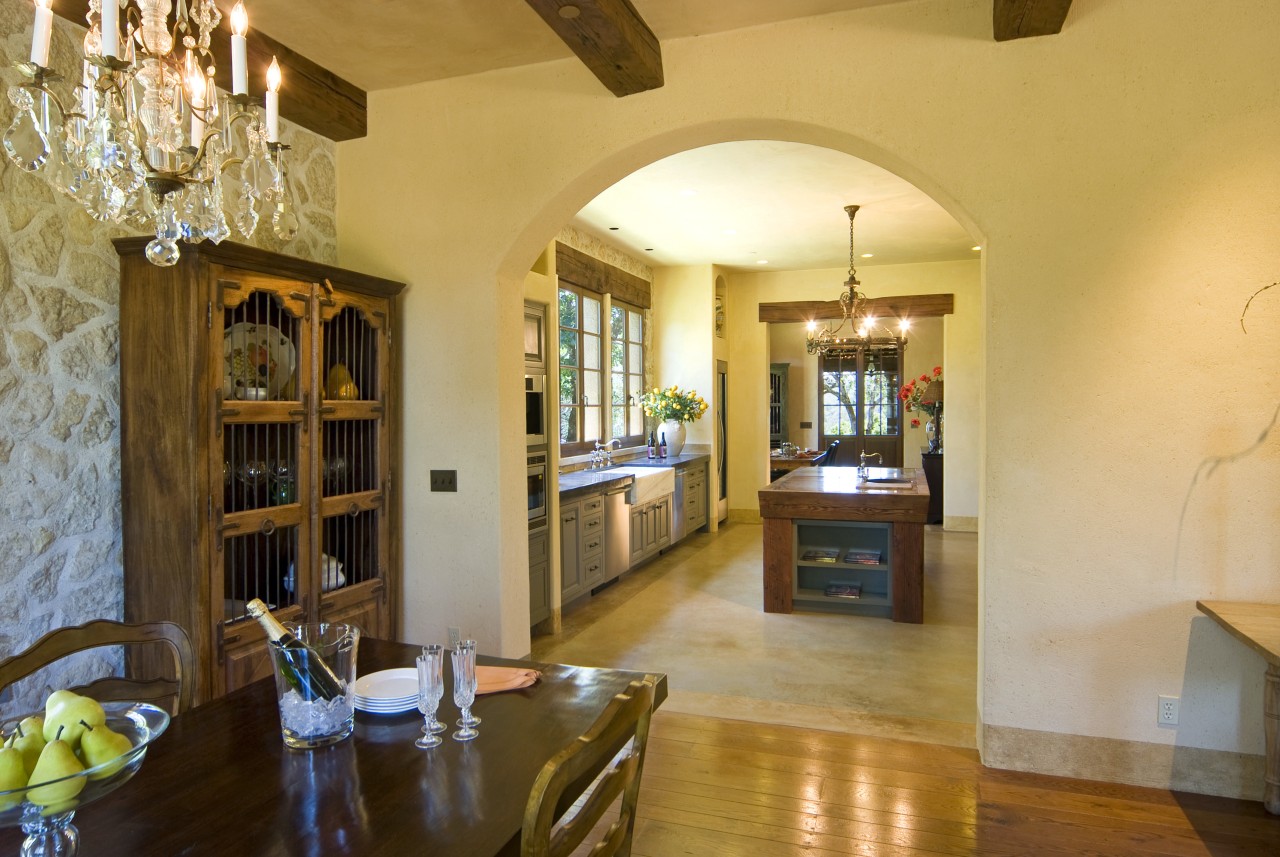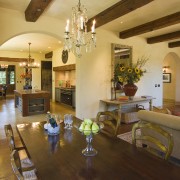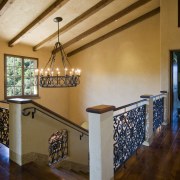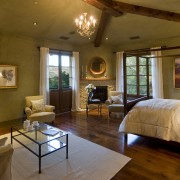La dolce vita
Just as traditional villas in Italy and the south of France were built to last for centuries, so this house will endure for generations to come
First-time visitors to Italy and southern France are invariably enchanted by the architecture, especially the solid, shuttered stone houses that provide a refuge from the heat of the sun.
It's an architectural style that has long proved ideal for the Mediterranean climate. It is also well suited to many parts of California, including the Sonoma Valley wine region where this house is located.
The house was conceived and built by Jon Reiter of Jon Reiter Fine Homes. A frequent business traveler to Europe, Reiter is passionate about the architecture and traditional craftsmanship embodied by the centuries-old villas.
It was this passion that inspired the design and construction of Montevigna, as this house is known. Reiter says the desire for authenticity even influenced the choice of building site.
"This wooded, 6-acre block was once a quarry and comprises lots of pits and mounds," he says. "But this was also why it was perfectly suited. Just as European homeowners would choose a site with plenty of natural building materials, so we chose this site for the stone we could use in construction. We could also build the house on a knoll to maximize the views."
Reiter says that as well as using stone quarried from the site, he wanted to incorporate recycled and reclaimed building materials wherever possible. And this extended to the landscaping. The entry, for example, features a gateway, columns and cobblestones imported from France.
The driveway was made from clay remnants that come from a local quarry. These were mixed with resins to form a solid surface that looks like gravel. The retaining walls were built from stone on site.
The house itself has an insulated concrete form (ICF) construction, which features concrete poured into recycled styrofoam blocks.
"Styrofoam does not break down readily, so rather than putting it into landfills, it makes sense to use it for a house that will be extremely well insulated," says Reiter.
The blocks, both outside and inside, have been finished with plaster that incorporates natural earth pigments and pine sawdust from the site.
The roof features French clay tiles in the traditional half-round shape. But all the door thresholds and windowsills were carved from stone slabs found on the land. The front door surround, also made from stone, was found languishing in a barn in southern Mexico.
"The solid oak door is one of the oldest items in the house," says Reiter. "This came from a house in Paris that was built in Napoleon's time."
Inside, the double-height entry highlights several key features, including decorative wrought iron inserts and heavy wood beams. These were reclaimed from a 100-year-old lodge situated in a lumber district in Canada.
A different treatment was provided for the ceiling in the library. This room features a typical Italian vaulted brick ceiling, which Reiter says was a particularly labour intensive part of the project.
The waxed concrete floor incorporates a finish pioneered by Reiter. To avoid the concrete cracking, the floor was cured with wet hay for weeks on end. The decomposing hay has left a distinctive textural pattern on the floor. In other rooms, the floors are oiled pine.
To ensure authenticity, the windows and shutters were imported from Italy. Reiter says he likes the wood used, and the German glass.
"But more importantly, the Italian manufacturer makes in-swing casements just like the original villas," he says.
Despite the traditional features, the house is designed for sustainability and energy efficiency. There are solar panels on the roof for water heating and radiant in-floor heating. And the floors are 2-3in thick to provide an energy-saving thermal mass.
Story by: Trendsideas
Home kitchen bathroom commercial design
Slow down, take a breath
Behind the scenes of an award-winning bathroom
Tropical escape
















